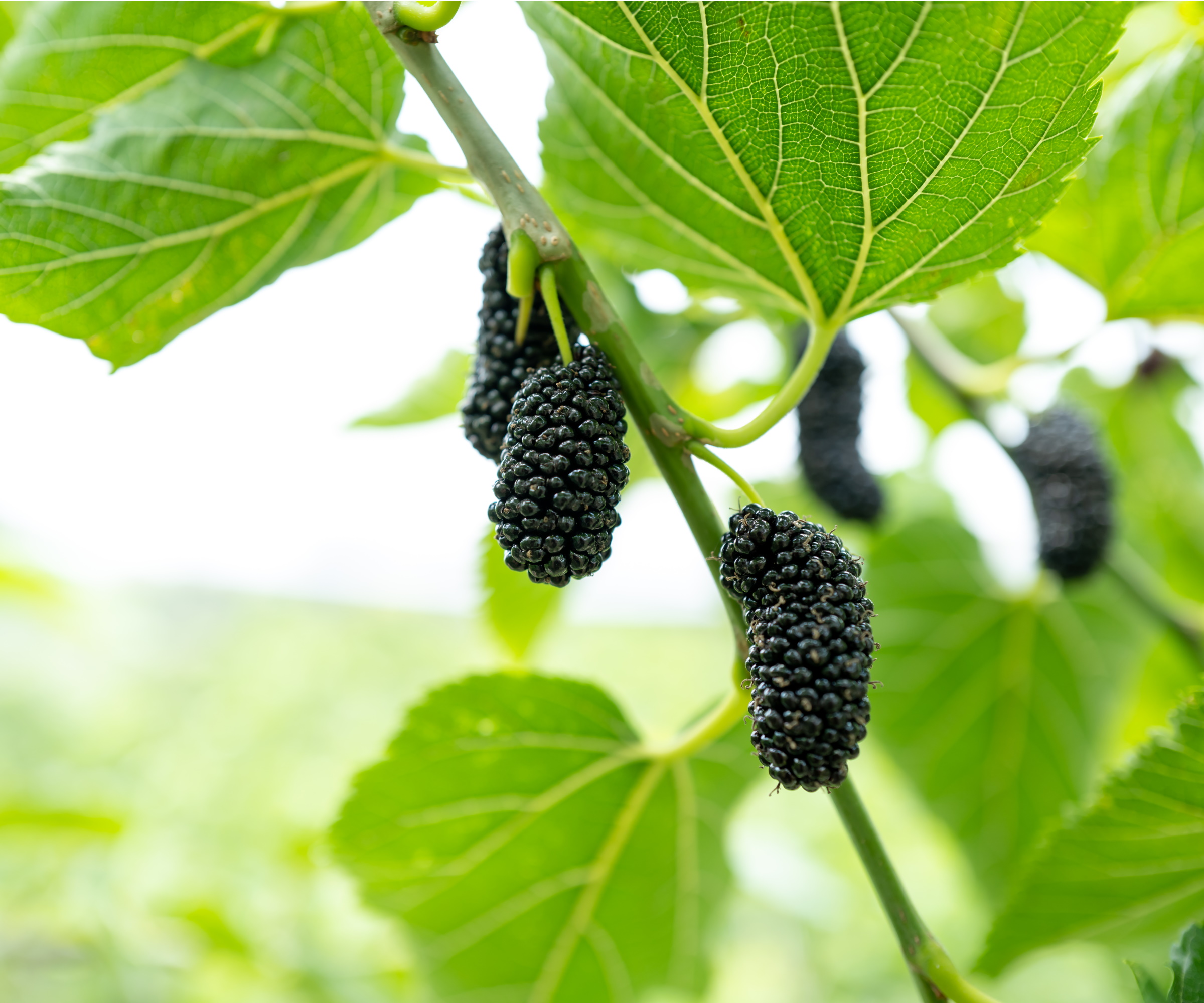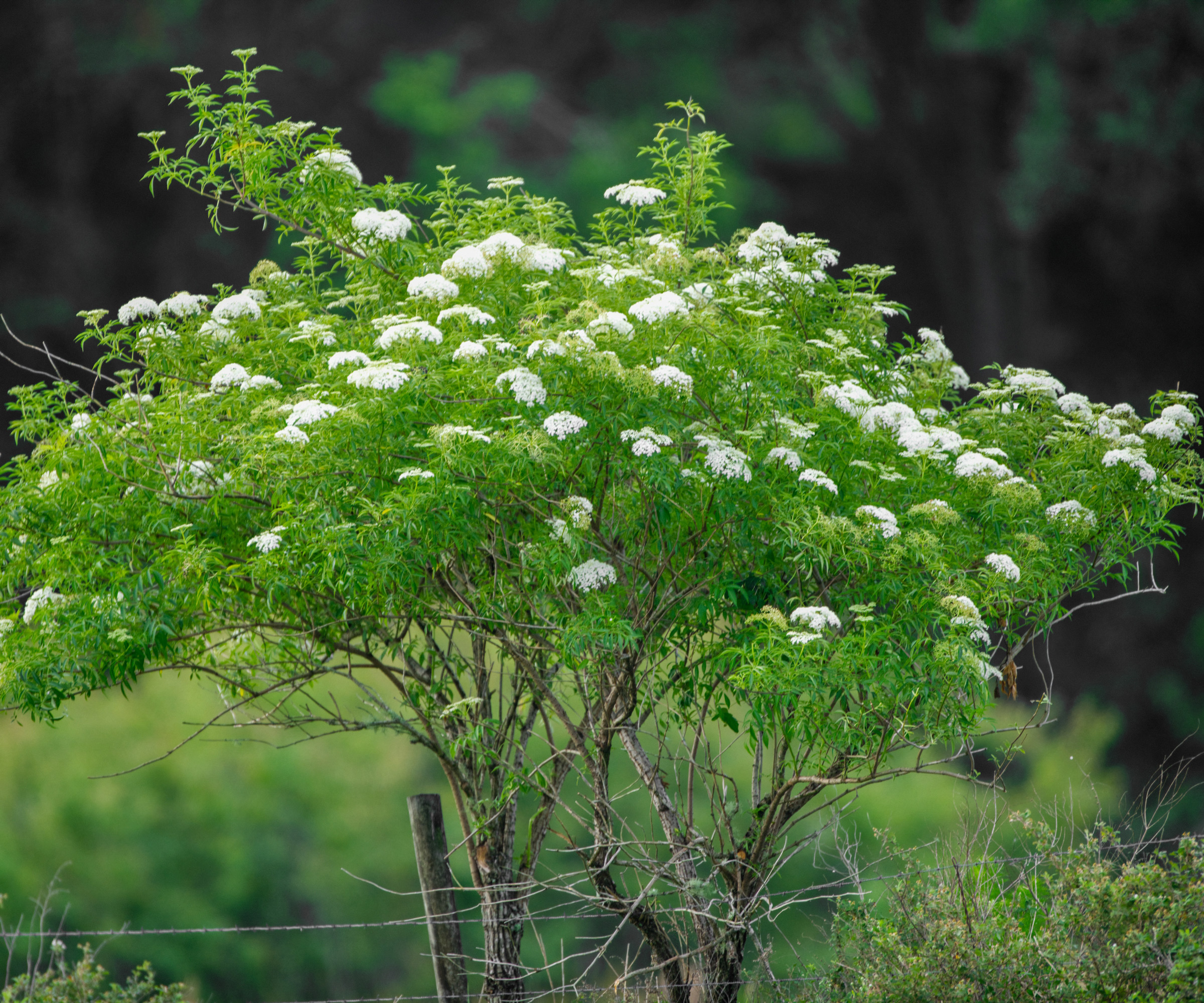Best edible hedge plants – 5 shrubs perfect for nutritious boundaries
Growing edible hedge plants will add fruits and flavor to the perimeter of your plot


Hedge planting can be both practical and decorative, providing privacy and security for your home while also adding greenery and texture to the yard.
There are so many shrubs that can be used as hedge plants, including evergreen thuja, more commonly known as arborvitae, or traditional yew, beech and hawthorn. However, it is possible to grow fruiting hedge plants for a nutritious and productive hedgerow alternative. Doing so will make the most out of your plot - and adding something homegrown to your suppers is always a nice touch.
So, while traditional evergreen hedge plants are undeniably useful, consider incorporating some of the best edible hedge plants into your yard this year. Here, we reveal unique and attractive fruiting and fragrant hedge plants to plant along your garden boundaries.

Blueberry bushes produce unique blue fruits in the summer months, making for a visual and tasty hedgerow
How to grow edible hedge plants
There are so many hedging plants to consider, ranging from flowering hedges to wildlife hedges, using plants such as hawthorn. If you enjoy kitchen garden ideas, however, try growing edible hedge plants for a productive, delicious perimeter.
In terms of when and how to plant a hedge, most shrubs can be planted either in the fall months, usually around October or November, or in the spring, typically in March or April. Pick a mild, dry day to plant your shrubs, and be sure to provide a deep watering to give your new hedge the best chance of success.
1. Dog roses

Rose hips are both decorative and delicious in the late summer and fall months
If you are looking for wildlife garden ideas this year, planting dog roses at the boundary of your yard is a good idea. Not only will pollinators love the nectar-rich single flowers, but the rose hips are a tasty treat for both animals and humans in the fall months. Try picking some to make vitamin-rich syrups or jams.
'Dog roses, Rosa canina, can be grown from US hardiness zone 5 plus,' says plant expert, Katie Sunderlage. 'They are incredibly hardy and will tolerate cold weather with no problem.
Design expertise in your inbox – from inspiring decorating ideas and beautiful celebrity homes to practical gardening advice and shopping round-ups.
'In terms of how to grow dog roses, they are very vigorous, fast-growing plants that thrive in sunny yards with moist but well-draining soil,' Katie adds. 'They are ideal for growing in a hedgerow among other shrubs, but be warned they will scramble and vine through other plants, sometimes reaching over 10 feet in length.'

Operations Manager at Holland Group, managing the customer service department and purchasing. Katie has been in the green industry since 2005 in the Greater Milwaukee area, earning her degree in Horticulture in 2008. She has been able to share her love for plants working in multiple garden centers, in sales positions and most recently in an online retail platform at Holland Group.
2. Mulberry

Mulberry fruits are always an unusual addition to any space
Mulberry trees can be trained to grow as small shrubs or as part of a hedge, and who wouldn't enjoy picking handfuls of delicious mulberry fruits during the summer months?
'Growing mulberry trees is not overly complicated,' says Bert Bast, garden expert and owner of Bast Brothers Garden Center. 'These trees do best from US hardiness zone 4 plus, growing well in full sun. They are tolerant of most soil types so long as there is some moisture in the ground.
'Mulberries are typically fast-growing and easy to establish, and can reach lofty heights,' Bert adds. Pruning will help to keep the size in check when growing in a hedge, but it might be a good idea to select a dwarf variety such as Morus rotundiloba 'Mojo Berry', which will grow no bigger than five or six feet. Remember to avoid planting any white mulberry varieties, as these are considered invasive plants across much of North America.
Live mulberry tree starter plants are available from Amazon.

Bert Bast is a garden expert and owner of Bast Brothers Garden Centre. Established in 2014 and nestled in the heart of Mullica Hill, NJ, Bast Brothers Garden Center is a destination for all things garden.
3. Blueberry

Blueberry bushes are ideal if you are seeking low-growing fruit bushes for a hedgerow
'There are several species that come to mind when thinking about edible hedge plants, but perhaps the most delicious would be a blueberry hedge,' says Bert Bast. Live blueberry plants are available from Nature Hills. For a popular fruiting variety, try Vaccinium corymbosum 'Patriot', a well-known blueberry that grows to about six feet tall.
'In terms of growing blueberries, most tend to reach anywhere between two and five feet in height, sometimes bigger, so pick a variety that is suited to your needs,' says Bert. 'Blueberries are far more compact and less vigorous than blackberries and raspberries, although both of these would also make for tasty edible hedges.'
In terms of getting a blueberry bush to fruit, remember that these shrubs need plenty of sunshine and moisture. They must also be grown in ericaceous, or acidic, soil, preferably with a pH of 4.5–5.5.
4. Hazel

Hazel bushes provide both foliage cover and produce delicious fruits in summer
Hazelnuts are popular and nutritious snacks that are high in magnesium and are a good source of vitamin E. Instead of buying them from the grocery store, why not plant a hazelnut hedge and produce handfuls of homegrown nuts to enjoy in the summer and fall months?
They tend to be fast-growing and low-maintenance hedge plants, quickly establishing themselves in sunny and partially shaded spots. Hazel trees can eventually reach up to 20 feet tall, but annual spring pruning will keep them in check.
The common hazel, Corylus avellana, is hardy down to US hardiness zone 6, whereas for cooler regions, try the native American hazel, Corylus americana, which can be grown down to zone 3. American hazelnut live trees are available from Amazon.
5. Elderberry

Elderberry shrubs make for fragrant and floral additions to any space
Elder shrubs are ideal for informal hedgerows when wild gardening. In terms of elder care, most species are hardy down to US hardiness zones 5 or 6 with a tolerance for both shady and sunny spots, although flowering and fruiting will be notably better in brighter situations.
Many species can reach up to 10 or 15 feet tall, so if possible, use elders at the back of the yard where they have room to grow. There are two native species, the American elder, Sambucus canadensis, which produces striking blue-black berries, and the red elder, Sambucus racemosa, which produces crimson fruits. Both are lightly fragrant when in bloom during the spring and summer.
Always do your homework on the exact species, but nearly all ripe elderberries are edible and can be used in jellies, jams, and even in wine-making. Alternatively, harvest the elder blooms to make elderflower cordial in the summer months, for a delicious and refreshing drink.
Live elderberry plants are available from Walmart.
FAQs
When is the best time to fertilize hedge plants?
While it will vary from species to species, most shrubs and hedge plants tend to respond well to an application of fertilizer in spring, just as new growth begins to emerge. However, once established, most trees, shrubs and hedge plants will be self-sufficient, with extensive root networks that can access nutrients in the soil.
You can plant different species in one hedgerow, combining evergreen and deciduous species for year-round interest in the garden. Whatever you decide, always try to incorporate native planting as part of your hedge, which will prove popular with local birds, bees and butterflies who will enjoy the blooms and berries on offer. Try the scarlet hawthorn, Crataegus coccinea, a North American species that produces sour berries that are useful when flavoring sauces, jams and wines.

Thomas is a Content Editor within the Gardens Team at Homes and Gardens. He has worked as a professional gardener for both public spaces and private estates, specializing in productive gardening, growing food and flowers. Trained in Horticulture at the Garden Museum, he has written on gardening and garden history for various publications, including The English Garden, Gardens Illustrated, Hortus, The London Gardener and Bloom. He has co-authored a Lonely Planet travel book, The Tree Atlas, due out in 2024.



